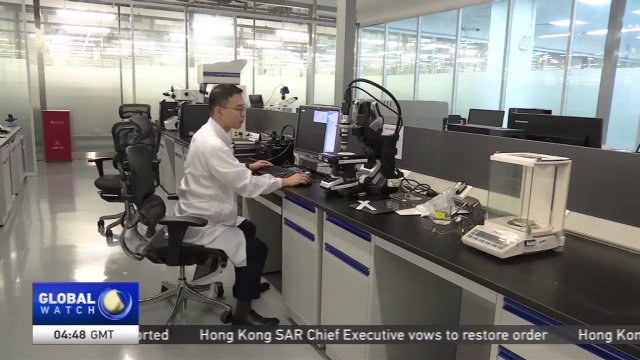
13:33, 05-Aug-2019
Inside 5G Tech: A glimpse at Huawei's core technologies used in 5G equipment
Updated
14:02, 05-Aug-2019

The 5G era is beginning with smartphone makers announcing and launching mobile devices ready for the new generation of communication. Many within and outside the industry view Chinese tech giant Huawei as a global leader in the field. But what lies within many of its products and devices, is often forgotten. CGTN reporter Omar Khan paid a visit to one of Huawei's tech labs in south China, to get a closer look at some of the core technologies the company has developed.
With the unveiling of the Mate 20X smartphone, Huawei is ushering in the 5G era. But behind the glamour of the final product, and perhaps out of the spotlight, lies years of research and development.
ZHAO ZHIPENG 5G CHIEF MARKETING OFFICER, HUAWEI "Since the year 2009, Huawei has already invested around 4 billion US dollars in 5G base station technology development, standard development and also equipment development."
The Shenzhen-based firm has over 80-thousand people working in R&D, accounting for nearly 50% of its workforce. And at one of Huawei's many labs in south China, a range of experiments and tests are being carried out to fuel the 5G rollout.
OMAR KHAN DONGGUAN, GUANGDONG PROVINCE "Here at Huawei's advanced thermal laboratory, scientists are exploring the latest in heat dissipation technology for 5G base stations. And it's exactly these units that will eventually power 5G networks, and coverage."
There's also this structure material lab, which was established back in 2012. Since then, engineers have studied the impact of harsh weather conditions and diverse environments on 5G equipment. Scientists say the units will have to be able to withstand corrosive substances, fluctuating temperatures and water.
DR. GONG STRUCTURE MATERIAL ENGINEER, HUAWEI "We've got coating technologies to avoid snow, or water accumulation on the surface, to make sure the covering snow won't prohibit signal transmission."
These base stations will eventually be placed outdoors in various exposed areas.
Engineers are using in-house developed technology, known as "active cooling" and "two-phase cooling", to ensure that networks powered by the base stations, can handle any climate.
DR. GONG STRUCTURE MATERIAL ENGINEER, HUAWEI "For 5G, the heat is also another problem. So heat generated by 5G chips is far more than 4G chips, so here we also have material technology for heat dissipation."
Given Huawei's unique positioning within the 5G industry, it should come as no surprise that the company wants to deliver a product that so many people are eager to experience.
From a business standpoint, their determination in R&D is translating into commercial success.
ZHAO ZHIPENG 5G CHIEF MARKETING OFFICER, HUAWEI "Up until now, Huawei has already signed more than 50 commercial contracts, 5G contracts with global leading operators. We've also already shipped more than 150-thousand, pieces, base stations, we are deploying and the operators are commercializing the 5G networks right now."
With 5G-enabled phones set to be in consumers' hands in just a few weeks, what lies underneath the cover may well be an afterthought. But for Huawei and their efforts, that's a reality they'll gladly take.
Omar Khan, CGTN, Dongguan, Guangdong Province.
SITEMAP
Copyright © 2018 CGTN. Beijing ICP prepared NO.16065310-3
Copyright © 2018 CGTN. Beijing ICP prepared NO.16065310-3